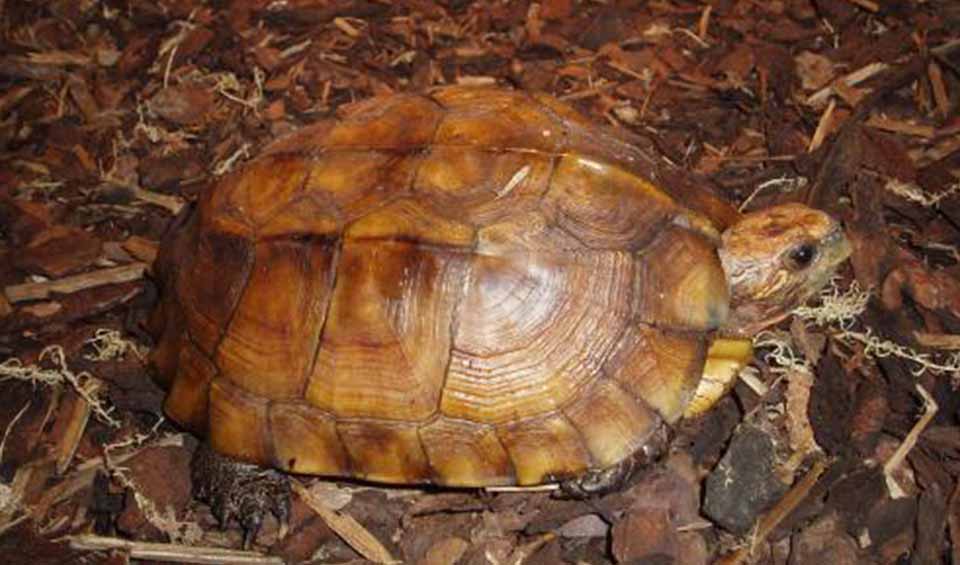The keeled box turtle (Cuora mouhotii) is a unique and rugged-looking species of turtle found in parts of Southeast Asia, including Vietnam, Laos, Thailand, southern China, and parts of Myanmar. It gets its name from the three raised ridges, or “keels,” that run along the top of its dark brown or olive shell. These keels give the shell a jagged, almost armored appearance, helping the turtle blend into the forest floor among sticks, leaves, and rocks. Its rough, angular shell makes it stand out from many other turtles, giving it a prehistoric look that reflects its ancient lineage.
This turtle is typically found in mountain forests and moist, rocky hillsides rather than in water. Although it can swim, the keeled box turtle is mostly terrestrial (land-dwelling) and prefers shady, damp areas where it can stay cool and hidden. Like other box turtles, it has a hinged plastron (the bottom part of its shell), which allows it to close itself up completely when threatened — turning its body into a living, sealed box. This built-in defense mechanism protects it from predators like birds, mammals, and even people.
The keeled box turtle is mostly nocturnal or crepuscular, meaning it’s active at night or during early morning and late afternoon. It is omnivorous, feeding on a variety of foods such as fruit, mushrooms, snails, insects, and fallen leaves. In the wild, it plays a role in seed dispersal and helps control insect populations, making it an important part of its ecosystem. It’s a solitary creature, usually seen alone and moving slowly through its forest habitat in search of food or shelter under rocks and logs.
Distribution
 Bangladesh
Bangladesh Bhutan
Bhutan China
China India
India Laos
Laos Myanmar
Myanmar Thailand
Thailand Vietnam
VietnamAnything we've missed?
Help us improve this page by suggesting edits. Glory never dies!
Suggest an editGet to know me
Terrestrial / Aquatic
Altricial / Precocial
Polygamous / Monogamous
Dimorphic (size) / Monomorphic
Active: Diurnal / Nocturnal
Social behavior: Solitary / Pack / Herd
Diet: Carnivore / Herbivore / Omnivore / Piscivorous / Insectivore
Migratory: Yes / No
Domesticated: Yes / No
Dangerous: Yes / No




